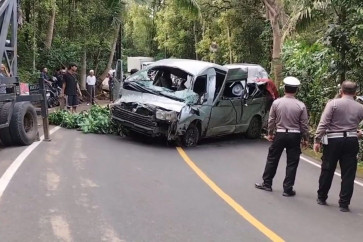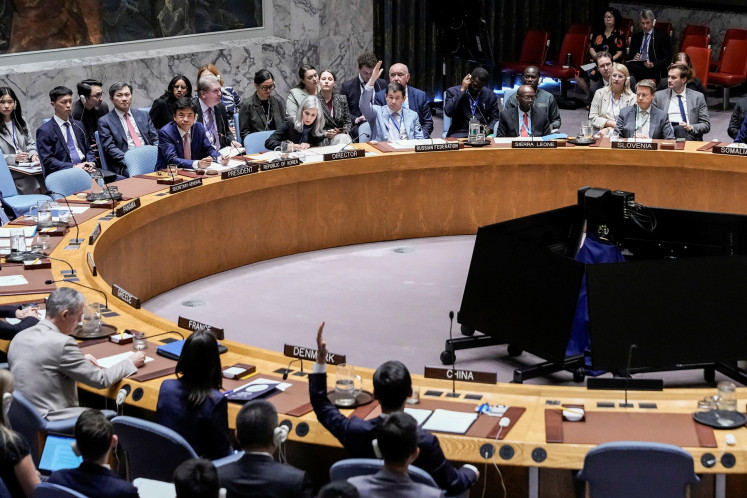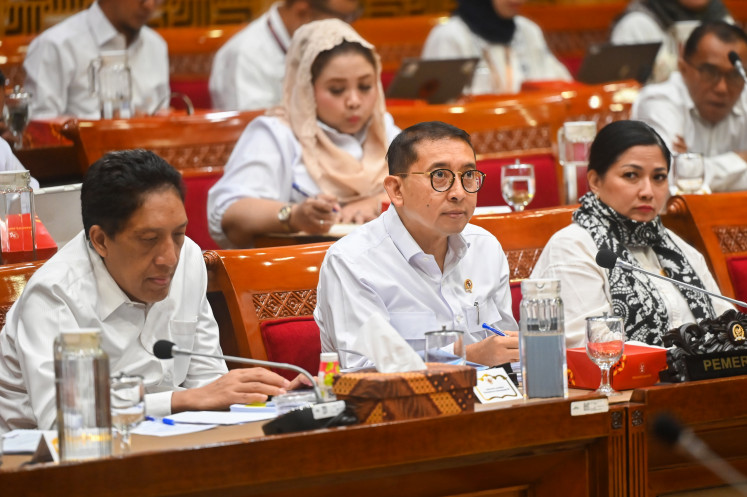Popular Reads
Top Results
Can't find what you're looking for?
View all search resultsPopular Reads
Top Results
Can't find what you're looking for?
View all search resultsDenmark is set for stronger presence in Indonesia
Indonesia’s rapid economic growth in past years, as opposed to the slow growth in many advanced economies, has made it increasingly attractive both as an investment destination and trade partner for many countries, including Denmark
Change text size
Gift Premium Articles
to Anyone
I
ndonesia’s rapid economic growth in past years, as opposed to the slow growth in many advanced economies, has made it increasingly attractive both as an investment destination and trade partner for many countries, including Denmark. Recently, Danish Trade and Investment Minister Pia Olsen Dhyr led a mission to Indonesia, to discuss growth strategies to bring bilateral ties to new heights by focusing on six key areas: clean technology; food technology; infrastructure and transportation; design, luxury and consumer goods; education and healthcare.
The Jakarta Post’s Linda Yulisman talked to the minister about the future of economic cooperation and other issues. Below are excerpts of the interview.
Question: Could you elaborate a little on the reason why you are here?
Answer: I’m visiting Indonesia because it’s the biggest economy in ASEAN and rapidly growing as a country, with the prediction saying that Indonesia will become the world’s 7th largest economy by 2030. At the moment, as a nation of exporters, we have to focus outside the European Union. As 54 percent of Danish GDP comes from exports, we are dependent on other countries. As for Indonesia, I think both because of the growth and the challenges that the Indonesian population are facing, it is important that you are more efficient with energy and improve sustainability. We can work together with your companies to find solutions to some of the challenges.
What outcomes do you expect from the growth strategy that you just launched?
Of course, we expect specific outcomes form the sectors we will focus on. But we can really add something where we have specialist knowledge. For example, when you are implementing an environment law, maybe we can help meet targets in this field because we have had RED [renewable energy directive] regulations for many years. This will bring us closer together and that is our strategy: making the two governments work closer together.
Based on the figure from Indonesia’s Investment Coordinating Board, investment from Danish firms in Indonesia is only 1 percent of your total foreign direct investment overseas. Do you know why Danish firms still invest so little in Indonesia?
Firstly, I think it’s because that Indonesia is not really well known in Denmark by the business community. When they talk about Asia, they often talk about China or India. We still have to let themknow that Indonesia is one of the biggest Asian markets. Another issue is that we don’t have a free trade agreement with Indonesia, which makes the companies not really confident about transparency and equal standards.
They want to have everything clear cut and very simple to access.Foreign investment from Denmark in Indonesia is very slow right now, but I’m very sure that it will increase after this visit. It’s the first time we have taken a broad base of companies with the minister toIndonesia, and having them partner with Indonesian business associates could ease them into the Indonesian market.
How do you assess the importance of the comprehensive economic partnership agreement (CEPA) that Indonesia will begin negotiating with the European Union?
That would mean Danish companies would have a transparent framework. In terms of investment, when Danish companies invest in Indonesia, they need to be sure that there are easy and accessible terms of how to invest. Our increase in exports will be limited, so it’s not so much in terms of trade. I mostly see potential for Indonesia. According to the scoping exercise for the agreement, Indonesia’s economy will grow by 1.5 percent through the agreement. So it’s an opportunity for Indonesian exporters to go to the European market.
You earlier said that your target is to double the bilateral trade by 2016. What will you do to boost bilateral trade?
Today, we don’t export much to Indonesia. It’s only around 700,000 Danish krone [US$120,000]. I would like to see that up to $240 million in 2016. At the moment we export quite a lot of pharmaceuticals, and I think that will increase naturally because Indonesia is facing the same problem as we are in the West.I also expect a big increase in the part Denmark can play in infrastructure development.
We have huge players in infrastructure solutions that can go to the Indonesian market, both to invest and export. In terms of food, you are also importing food, and poultry could be one example of something that we can export. Apart from this, maybe we can sell machinery for agriculture.
Could you elaborate what kind of opportunities are available for Indonesian exporters in the Danish market?
It is obvious that we import quite a lot of food. Garments are also an area where Indonesia exports to Denmark.
I think you have to go up the value chain by producing high level products if the Indonesian economy is really to grow. I think you’re not in that field yet, but that would be the way to go. For example, instead of exporting fruit, you should probably export juice. It just means that you give added value to the items which you export.










